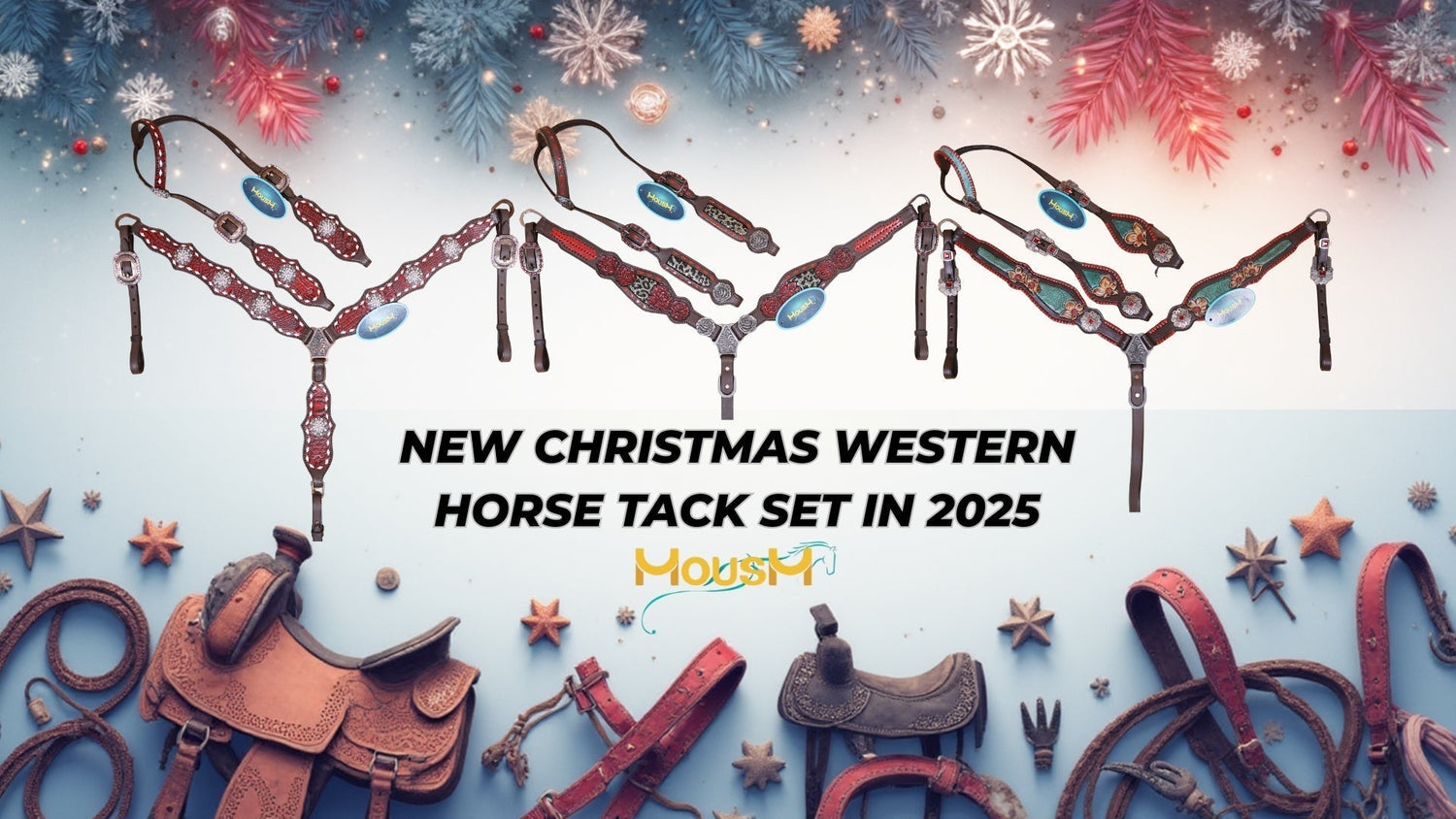A saddle pad is a must-have piece of tack, providing a cushioning layer between the horse’s back and the saddle. It plays a crucial role in ensuring both horse and rider comfort by helping to distribute pressure evenly across the horse’s back. A well-maintained saddle pad is essential for preventing pressure points, soreness, and chafing. Any sign of wear such as rips, holes, or uneven padding can increase the risk of discomfort, injury, or long-term damage to your horse.
Regular care and maintenance can help extend your saddle pad’s lifespan, but if you notice signs of wear that lead to discomfort for you or your horse, it’s time to replace it immediately.
Key Warning Signs Your Saddle Pad Needs Replacing:
1. Visible wear and tear
- Thinning padding: Examine the pad for areas where the padding has become compressed and lost its thickness, especially in high-pressure areas under the saddle bars.
- Tears, holes, or fraying: Any damage to the pad's integrity can compromise its effectiveness and potentially cause rubbing or discomfort for your horse.
- Loose stitching: Compromised stitching can lead to the pad falling apart or losing its shape, making it unsafe and ineffective.
2. Changes in the pad's feel and function
- Hardness or Stiffness: A saddle pad that feels hard or stiff, especially after drying from sweat, indicates packed-down fibers that no longer provide adequate cushioning.
- Reduced Compression and Rebound: Press down on the pad. If it doesn't compress easily or rebound quickly, it's losing its shock-absorbing capabilities.
- Uneven Padding: Feel for lumps, bumps, or inconsistencies in the padding that could create pressure points on your horse's back.
- Excessive Saddle Movement: If your saddle seems to be moving more than usual during rides, a worn-out pad might be contributing to the instability.
3. Signs your horse is uncomfortable
- Dry or uneven sweat patterns: Noticeable dry spots or areas where sweat is unevenly distributed on your horse's back after a ride can indicate pressure points from an ill-fitting or worn pad.
- White hairs or hair loss: These are clear signs of prolonged pressure and restricted blood flow, potentially caused by an inadequate saddle pad.
- Soreness or tenderness in the back: If your horse reacts negatively to being touched or groomed in the back area, or seems stiff or reluctant to move, the saddle pad could be a contributing factor.
- Changes in behavior under saddle: Increased irritability, resistance to work, reluctance to turn, or changes in gait can be subtle but important clues that your horse is experiencing discomfort.
Factors that Affect Saddle Pad Longevity
-
Material and Fit
The type of material your saddle pad is made from has a big impact on how long it will last. High-quality materials like wool, felt, or memory foam tend to hold up better over time compared to cheaper synthetic options. These materials are not only more durable but also offer better comfort and breathability for your horse. Along with material, the fit of the pad is just as important. A saddle pad that fits your horse and saddle properly will stay in place and wear evenly. On the other hand, a pad that slips or bunches up during rides can develop thin spots, rub marks, or tears much faster. -
Frequency of Use and Riding Conditions
How often you ride plays a major role in how long your saddle pad will last. A pad used every day will naturally wear out faster than one used just on weekends. Riding in tough conditions like mud, rain, or high heat can also shorten its lifespan, especially if the pad stays damp or dirty for long periods. Sweat and moisture can break down the fibers inside the pad, making it stiff or lumpy over time. If you ride hard and often, your pad will need to be replaced more frequently, even if it’s made from a good-quality material. -
Care and Storage
Taking care of your saddle pad doesn’t have to be complicated, but it makes a big difference for your horse’s comfort and the pad’s lifespan. After each ride, give it a good shake to get rid of hair, dirt, and sweat, and let it air out completely before putting it away. A damp pad stored too soon can lead to mold and odors. Wash it regularly based on the material and brand instructions it helps keep the padding fresh and working properly. When storing, keep it in a clean, dry spot with good airflow. Hanging it on a rack or laying it out flat works best. Try not to pile other gear on top so it keeps its shape and stays ready for your next ride.
Tips to Extend the Life of Your Saddle Pad
1. Rotate Pads Between Rides
If you ride regularly, consider using more than one saddle pad and rotate them throughout the week. This gives each pad a chance to dry out fully and bounce back to its original shape. Constant use of the same pad can lead to uneven compression and faster wear, especially in high-pressure areas.
2. Air Dry After Each Ride
Always allow your saddle pad to dry completely after every ride. Even if it doesn’t feel soaking wet, moisture from sweat can build up inside the layers. Hang it in a well-ventilated space, preferably out of direct sunlight to avoid fading or heat damage. Avoid tossing it into a tack trunk or closed storage area while still damp.
3. Regular Deep Cleaning
Surface brushing helps, but a deep clean is necessary to remove sweat salts, dirt, and hair trapped in the fibers. Depending on the material, you can hose off, hand wash, or machine wash your pad. Use mild detergent and avoid fabric softeners, as they can affect breathability and performance. Rinse thoroughly and allow it to air dry flat.
4. Store in a Clean, Dry Place Off the Ground
Proper storage makes a big difference in how long your pad lasts. Keep it off the floor to prevent contact with dust, moisture, and rodents. Use a saddle pad rack or hang it over a rail in a dry, well-aired space. Avoid stacking pads tightly or folding them for long periods, as this can lead to creasing and misshaping.
5. Brush Off Hair and Dirt After Every Ride
After removing the pad, use a stiff-bristled brush or rubber curry comb to get rid of loose hair, dust, and debris. This simple habit reduces buildup that can degrade fabric and padding over time, and it helps your pad stay fresh between deep cleanings.
6. Inspect for Damage Regularly
Make it a routine to check your saddle pad for thinning areas, uneven padding, tears, or broken stitching. Catching wear early allows you to address minor issues before they turn into bigger problems. It also helps you decide when it’s time for a replacement.
7. Use a Clean Horse and Clean Tack
Dirt and sweat from your horse can quickly soak into the pad. Brushing your horse thoroughly before saddling up helps reduce the amount of grime transferred to the pad. Likewise, keeping your saddle clean ensures that grit or residue doesn’t grind into the pad during use.
A good saddle pad is more than just a layer of cushioning, it’s an essential part of keeping your horse comfortable, protected, and performing at their best. Over time, even the highest-quality pad will begin to show signs of wear. Paying attention to those early warning signs like thinning, stiffness, uneven padding, or changes in your horse’s behavior can help you take action before discomfort turns into injury.
Regular inspection, proper cleaning, and timely replacement are all key to making sure your saddle pad continues to do its job well. If your current pad no longer provides the support and protection your horse needs, don’t wait — replacing it at the right time is a simple way to support your horse’s health and ride quality.
Choose MOUSM
If you find a Western tack set collection, MOUSM is a great place to visit for. Here, you'll find a wide range of equestrian products, including headstalls, breast collars, wither and spur straps, bronc halters, saddles, saddle pads, bosals, as well as home décor and fashion accessories, etc. Every piece is crafted from genuine Argentine cowhide leather and meticulously handmade by skilled artisans. Each design showcases exceptional craftsmanship, featuring intricate hand tooling, striking acid wash finishes, and eye-catching stonework.
Equipped with premium-quality studs, sparkling stones, and elegant conchos, these products are built to offer both durability and long-lasting performance. Their sturdy construction ensures they can handle the rigors of Western riding while maintaining their stylish appeal.
Perfect for Western riding, rodeo events, equestrian shows, and everyday wear, MOUSM pieces not only complement your gear with confidence but also add a distinctive and fashionable flair to your collection. Whether you’re in the arena or on the trail, these accessories combine functionality with stunning design, reflecting your passion for riding and your appreciation for quality craftsmanship. Shop Once! and Grab Amazing Deals and Discounts








